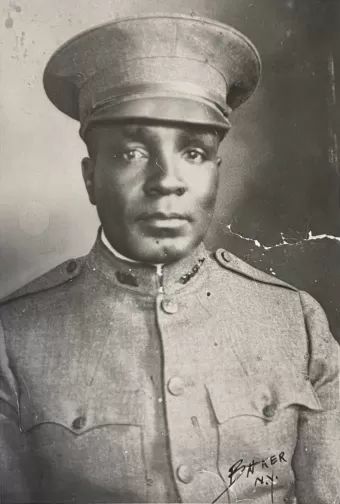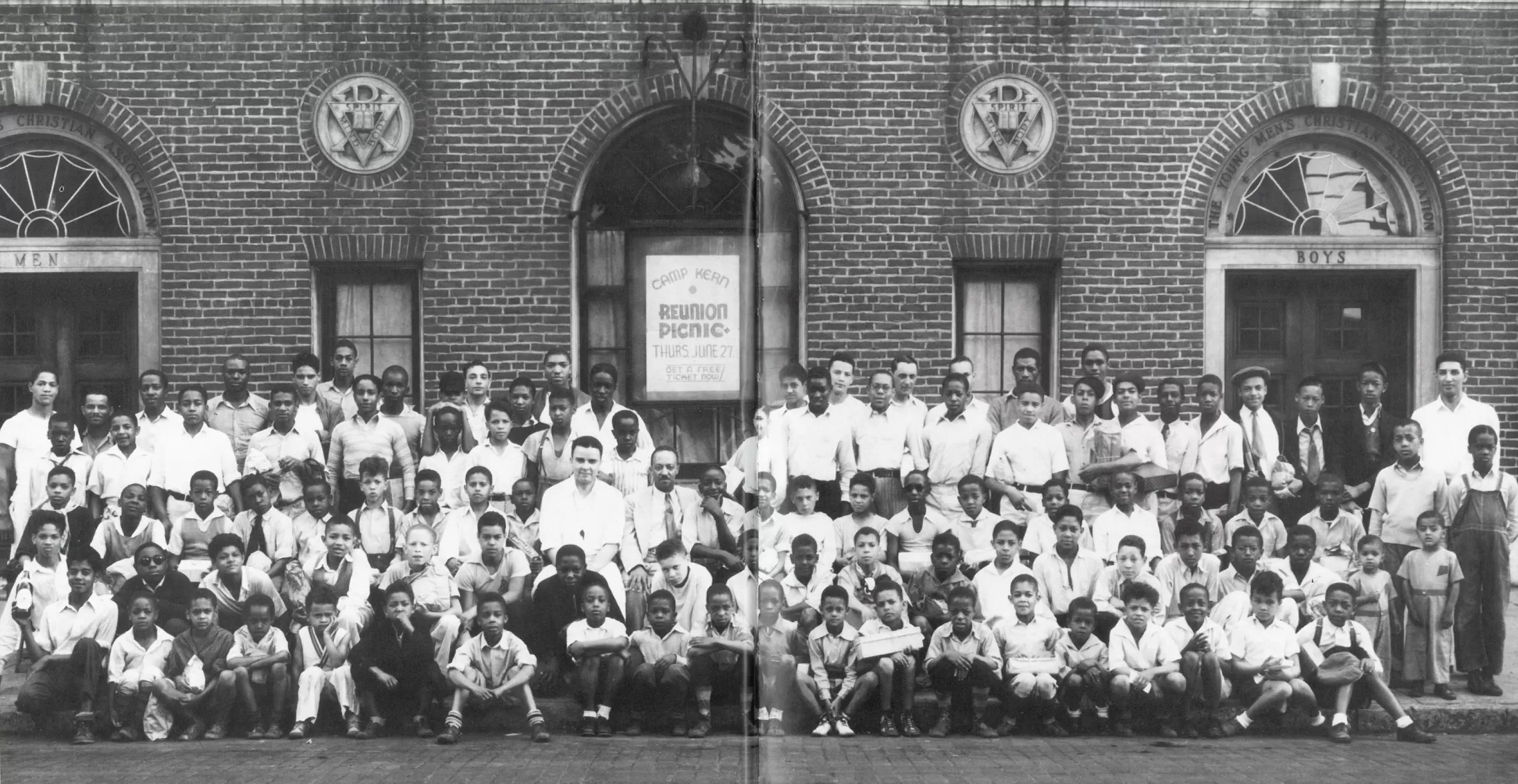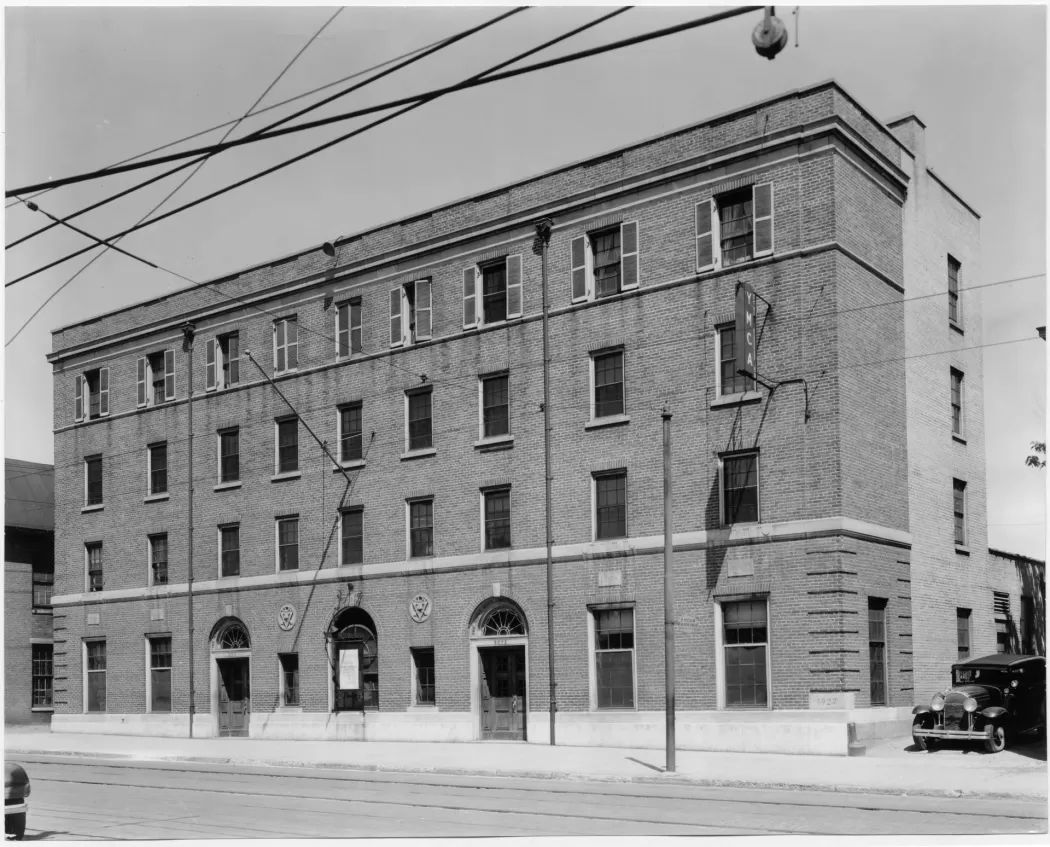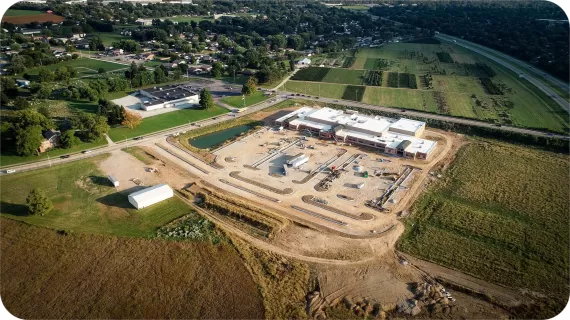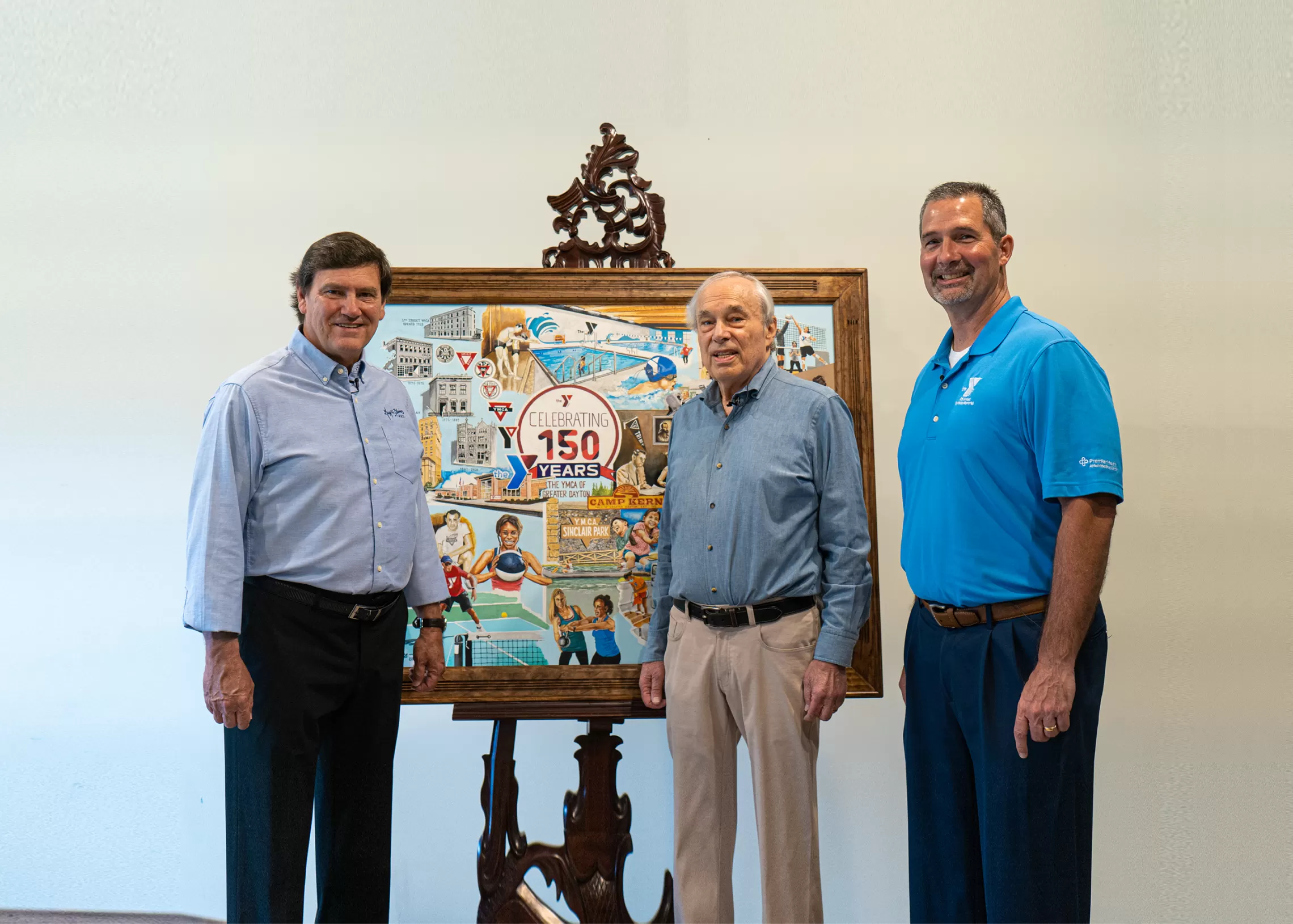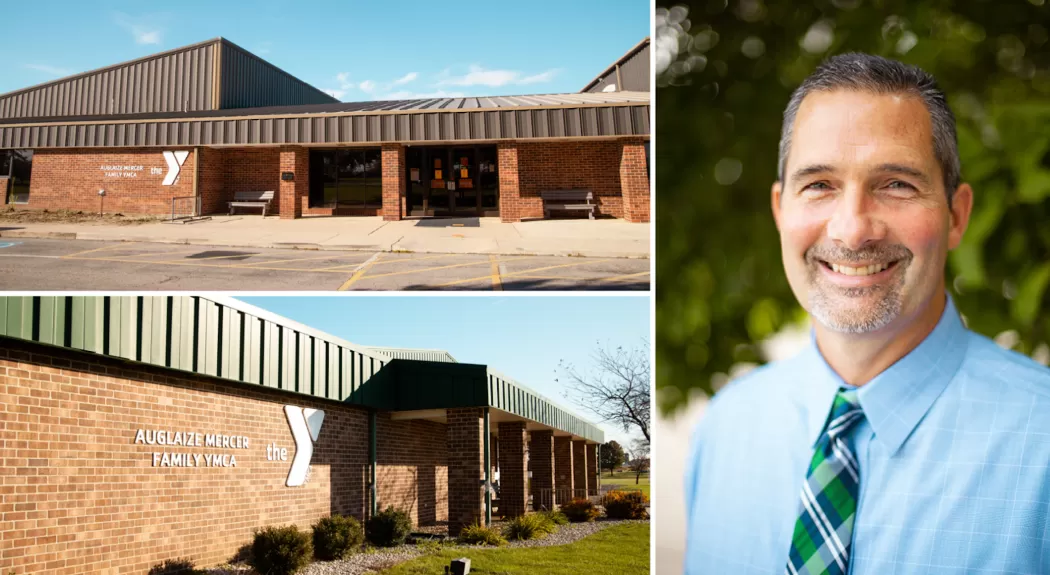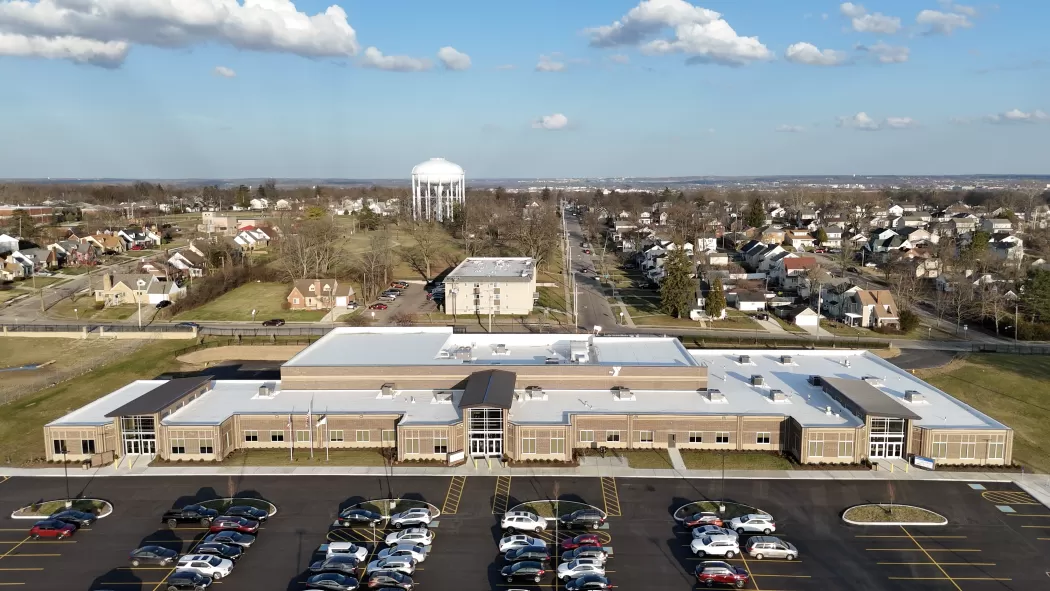The YMCA of Greater Dayton has been serving the Miami Valley since 1870, building a healthy spirit, mind and body for all.
Early Beginnings – 1850's
On July 8th, 1858, a small group of men went to Wesley Chapel on Third Street to hear from Professor Milton Saylor about a movement that had been sweeping across the country. After that meeting the Young Men’s Christian Association of Dayton was established and remained in existence until 1861 when it was disbanded due to the Civil War.
Official Founding – March 2, 1870
The decision to re-establish the YMCA in Dayton was made on February 13th, 1870 by a group of local pastors. The formal reorganization occurred on March 2, 1870 with the group naming Robert W. Steele as President of the Board of Directors and H.P. Adams as Secretary.
As the first order of business the Board of Directors adopted the following purpose for the newly reorganized 247-member association;
- To maintain a reading room as a resort for young men.
- To provide a series of public lectures.
- To foster Sunday schools now in existence and to establish new ones where needed.
- To hold meetings for prayer, conference and exhortation, especially in neighborhoods without the means of religious instruction.
- To distribute religious tracts and Bibles.
- To relieve the wants of the poor and unfortunate.
- To visit prisons and asylums.
- To search out young men who may move to our city, to surround them with Christian influences, to obtain employment for them and in many ways to render aid.
From 1870-1874, the YMCA of Dayton occupied the upper floor of the Dayton Journal Building. This space was known to the members as the Young Men’s Reading Room and it included meeting areas, as well as quiet and social areas.
In 1874, H.P. Adams resigned as secretary and David A. Sinclair was hired as his replacement. Shortly after hiring David Sinclair (1875) the association had outgrown the Young Men’s Reading Room and the association leadership decided to launch a public campaign to obtain a larger facility. Through this campaign they were able to raise $24,000 to purchase the Dunlevy House at 32 East 4th Street.
David Sinclair had a new vision of what the YMCA should be. He believed that the association should work directly for and through young men and boys, that they should establish useful classes with flexible schedules, offer recreational and athletic facilities and programs, ask individuals to pay for membership, and respond to the needs of the young men living in the community. His ideas were initially rejected but after years of economic hardship to the YMCA and continued perseverance, the Board of Trustees would come to accept these ideas.
By 1886, the Dunlevy house had become too small and a public campaign was launched to replace the current structure on the same site. In February of 1887 a new facility designed to serve up to 1200 members opened. David Sinclair said the facility should serve the community for 50 years.
After just 10 short years the new facility was overcrowded and operating at maximum capacity. In 1897 David Sinclair began to identify and explore opportunities for expansion and present them to the Board of Trustees. Five years had gone by with no real expansion progress when Miss Mary Belle Eaker left her family home on the northwest corner of Ludlow and Third Streets to the Dayton YMCA. David Sinclair recognized this as the opportunity to do something significant for the YMCA in Dayton and a public campaign to construct a new facility on the Eaker family home site was launched.
1900 – 1950’s
In September of 1902 David Sinclair passed away. Through this event the YMCA stumbled but it ultimately drove the volunteers on to greater efforts and the $250,000 was raised.
In April of 1908 the new YMCA facility on the Eaker Family home site was opened and was valued at $500,000. At this time, it was the second largest YMCA facility in the world standing 6 stories tall. It is estimated that over 20,000 people visited this YMCA and utilized its services. (This facility is no longer owned by the YMCA but is still standing today as Dayton City Hall).
By 1909, the association had decided to add day camp programs to its operation, so 30 acres of land with mature trees was purchased. The new day camp site was 6 miles north of Dayton along the Stillwater River and was named Sinclair Park, in memory of David Sinclair. At this site, the Dayton YMCA was able to serve 10,000 people annually. Still known as Sinclair Park, the site today is owned and operated as a public park by Harrison Township.
In March of 1913 disaster struck the Dayton Area. In what is known as greatest natural disaster in the state of Ohio, “The Great Dayton Flood”, brought 20 feet of water into the heart of downtown and right into the lobby of the only 5-year-old YMCA facility. Fortunately for the community, quick thinking YMCA staff successfully shut down all the automatic controls (Steam, Gas, and Water) saving the new facility from extensive additional damage. These actions made it possible for the YMCA to assist in the disaster response serving as a central hub that housed DP&L steam production, militia troops, the Board of Health, and the Red Cross.
Later that year, the YMCA purchased 68 acres of land near Lebanon as part of a planned camping program. The 68-acre camp site was named Camp Ozone by Carl Kern, Chris Kunz, and the first group of 28 boys due to the lack of tents and protection from the weather.
In June of 1917, Carl Kern was struck and killed by an interurban car. Following this event Camp Ozone was renamed Camp Kern in his honor. Since 1917 Camp Kern has grown to 485 acres and is the premier resident camp in the state of Ohio.
By 1921 demand for the YMCA’s educational classes and seminars had become so strong the association started The School of Commerce and Finance at the YMCA with 2 and 4-year programs.
In 1925, with the addition of the adult education classes and programs the YMCA had once again outgrown its facility and a plan for expansion was announced. The group of architects hired advised the YMCA leadership that it would be better to build a new facility to serve the modern day needs rather than renovate the 17-year-old facility. This changed the announced expansion plan into a construction and relocation plan.
During the construction of the new facility, the School of Commerce and Finance at the YMCA continued to grow and expand. In 1927, the school became known as the Wittenberg-Dayton YMCA School of Liberal Arts. The educational programs offered at the school were the equivalent of the first two years of college. All classes were offered in the late afternoon or evenings to be accessible to working adults that wanted to further their education. One year later, in 1928, the school added evening high school classes for working adults who were unable to complete their high school education earlier in life.
The “colored” YMCA was founded in 1889. The black YMCA’s in the United states was active and growing greatly. In Dayton, this was also true. In 1910 most black YMCA groups did not own property of their own. With the help of men like E.T. Banks helped make the Fifth Street Y the oldest incorporated “colored” Y in the country, even without a dedicated space of their own.
The Fifth Street YMCA started Boy Scout Troop 30 in 1919 under A.W. Payne. The mission to help boys become men would be a fundamental part of the Fifth Street YMCA branch, inscribing the words “Boys” and “Men” above the two entrances to the building to come. As these Young members grew in Mind, Body, and Spirit they would eventually be allowed to enter through the “Men” door.
With fundraising efforts coinciding with the building of the Central YMCA, the Fifth Street YMCA branch was built on the west side of Dayton (907 West Fifth Street) and opened to the public on New Year’s Day, 1928 as the 18th privately owned black YMCA building in the nation. It was four stories high with a gymnasium, swimming pool, cafeteria, recreation rooms, and a residence for fifty men. Inscribed in the exterior of the building were the names of four renowned black men: Booker T. Washington, Frederick Douglass, William A. Hunton, and Paul Lawrence Dunbar. The Dayton YMCA Fifth Street branch was the nation’s longest lasting black YMCA.
On September 8th, 1929, the “Central Branch” of the Dayton YMCA opened at 316 N. Wilkinson Street. The 1.3-million-dollar facility had 13 classrooms, 4 laboratories, facilities for up to 1,000 students, a swimming pool, chapel, library, handball courts, three gymnasiums, 245 residence rooms, a cafeteria, and an auditorium with seating for 450. Today, this facility is still a thriving part of downtown Dayton and is known as the Downtown YMCA.
By 1938 the Wittenberg-Dayton YMCA School had grown in reputation and had its Engineering Administration program formally recognized by the Department of Education as a college level program which opened the door for further growth and expansion.
In 1946, the YMCA in Fairborn was established and was housed in the Dayton U.S.O. building which was subsequently destroyed by fire in November of 1947. The current Fairborn YMCA facility was opened in 1951 replacing the one destroyed by fire.
In 1948, the Wittenberg-Dayton YMCA School of Liberal Arts was renamed Sinclair College of the YMCA to honor David Sinclair and his contributions to the YMCA and the adult education movement.
In May of 1949 the Dayton association marked a milestone when it opened the Oakwood YMCA Branch. The Dayton YMCA, now 80 years old, was considered one of the premier YMCA associations in the country. That year the YMCA was used four times for every man, woman, and child in the city, for a total of 1,398,818 times. The newly formed Oakwood branch was poised to expand the Dayton YMCA’s reach even further. The new branch was headquartered in the East Oakwood Club building and was organized with the understanding that the emphasis would be on co-educational programs.
In the fall of 1955 the YMCA President and General Secretary met with 80 interested citizens at Moraine Country Club to explore the possibility of bringing a YMCA and its programs to the rapidly growing suburb of Kettering.
On February 1st, 1956, after about a year of exploration the Kettering YMCA was organized as an extension of the metropolitan office. 14 months later on April 2nd, 1957, the Kettering YMCA petitioned the Metropolitan Board of Advisors for branch status. The Board determined that Kettering had met the requirements necessary for branch status. That month the Kettering YMCA officially became a branch of the YMCA of Dayton with a charter from the National Council of YMCAs.\
1960-1990’s
By 1960, the Dayton YMCA had become a multi-branch metropolitan organization with the Central branch also housing the association level staff. In 1960, the sites and facilities were as follows; Central Branch (full facility – now Downtown YMCA), Fifth Street Branch (907 West Fifth Street – full facility serving residents from the West side), Town and Country Branch (program facility - focused on helping young people understand themselves and their resources available), Fairborn Branch (full facility - serving the Fairborn community), Oakwood Branch (program facility - focused on co-educational programs), Kettering Branch (program facility - serving the Kettering Community) Sinclair Park (housed Day Camp programs), and Camp Kern (housed overnight resident camping programs).
In 1961, the Dayton YMCA launched a capital campaign to benefit all the metropolitan YMCA sites and facilities. The campaign netted $1,293,568, of which $303,000 was allocated for the building of a full facility in the still rapidly growing suburb of Kettering. During this time, it became clear that the Kettering YMCA would have to relocate to attain the acreage needed to construct a full-service facility.
In 1962, the Dayton YMCA received a generous gift of 4.4 acres from George and Miriam Steller. The acreage, located at the corner of David and Marshall Road, was given for the purpose of building a new home for the Kettering YMCA.
In 1964, the Kettering YMCA opened (now known as the South YMCA). The new full-service facility included a swimming pool, multipurpose room, locker rooms, activity room, club room, a lounge and a large lobby. With space at a premium, the Kettering YMCA was a busy beehive of activity and would need to be expanded 2 more times by 1974 to add additional gymnasiums, and activity space.
With a new purpose of working with boys and girls in the inner city, the Enrichment Center program began through the Fifth Street YMCA branch In 1965. This program utilized space within schools to offer after school care. It was designed to enrich the lives of disadvantaged youth through a wide variety of program activities.
In 1966, the Dayton YMCA started “Operation Latch Key” which resulted in school age childcare programming that focused on impoverished children and their families. Later that year 11 acres at the corner of Olive Road and Shiloh Springs Road was purchased for what would become the Northwest Family YMCA Branch. By the end of 1966 Sinclair College at the YMCA broke away from the YMCA to become Sinclair Community College, a public controlled institution of higher learning. The classes would continue to be held at the Central Branch of the YMCA until the new Sinclair building was completed.
By 1970, the Dayton YMCA had 30,000 members and was set to expand more with the newly constructed the South Suburban YMCA. This full facility was designed to serve the growing communities of Centerville and Washington Township.
In 1975, the Fifth Street YMCA closed when the interstate divided the community. It was reopened in 1978 as a YMCA/YWCA collaboration with funding from Virginia Kettering and operated this way until the 1990’s when the YWCA left.
In the 1980’s the Centerville/Washington Township branch was given to the city and is now operated as the Washington Township Rec Center.
In 1988, the Central Branch YMCA was sold to McCormack Baron as part of an urban revitalization program. During this renovation time, the members of the Central Branch who remained were known as “Hard Hat members” and could utilize the other facilities. The Central Branch’s residence rooms were converted to downtown apartments and the facility re-opened as The Landing and the Downtown YMCA in 1992.
By the 1990’s the Dayton YMCA needed to tighten its belt and refocus its efforts and resources. The YWCA left the Fifth Street Location and a facility partnership was formed with the Dayton Academy leasing the land and space. Eventually, the Fifth Street facility was donated to the Dixon United Methodist Church. The Northwest YMCA membership was unable to support the facility financially and the facility was closed and sold. The Fairborn YMCA was then given to the Greene County YMCA to operate.
2000-2017
In 2000, the Dayton YMCA started a Collaborative Model when building new facilities which led to 6 years of booming growth. Partners of the new collaborative model enjoy increased image and expanded visibility. In linking highly regarded reputations, The YMCA is able to establish roots, often without significant capital or a modest “doable” size campaign. Fiscal economies of scale kick in when programs and facilities are shared.
The Coffman YMCA opened as a 45,000-square foot facility in January 2000. The facility has been added on to three times since opening resulting in what is today a 75,000-square foot facility composed of 3 gyms, lap pool and warm water therapy pool, 8,900 square foot health & wellness center, family center, aerobics center and multi-purpose space. The partners include the Southwest Church, Atrium Medical Center, and Coffman Development.
In February of 2002, the Kleptz YMCA opened as a 63,000-square foot facility. The facility has been expanded to add an additional 3000 square feet of health & wellness space as well as 15,300 square feet of educational space, utilized by Sinclair Community College. The expansion resulted in a facility that is approximately 91,000 square feet and is comprised of a gym, lap pool and warm water therapy pool, 8,000 square foot health & wellness center, family center, and multi-purpose space located on 23 acres of property. The partners include Stillwater United Methodist Church, Kettering Health Network, City of Englewood, and Sinclair Community College.
In February of 2003, the Preble County YMCA opened a 40,000-square foot facility. This facility includes a gym, lap pool, health & wellness center, teen center and multi-purpose space located on 15 acres of property. The YMCA has expanded an additional 3,000 square feet and Kettering Health Network has expanded four times within the facility. These expansions have resulted in the facility being 108,000 square feet. The Preble County Youth Foundation owns the facility and shares program responsibility with the YMCA. The partners include the Preble County Youth Foundation, Kettering Health Network, and Sinclair Community College.
The West Carrollton YMCA opened a 36,000-square foot facility in March 2004, which includes a gym, lap pool and warm water therapy pool, health & wellness center, teen center and multi-purpose space located on 10 acres of property. The facility was developed in partnership with the City of West Carrollton. The city provided the capital to construct the building and owns the facility with the YMCA being responsible for all operations.
By February of 2005, the YMCA of Greater Dayton opened its 5th new full facility in 5 years. The Huber Heights YMCA opened as a 56,000-square foot facility. The facility was recently expanded to add an additional 15,300 square feet of educational space utilized by Sinclair Community College. The expansion resulted in a facility that is 71,000 square feet comprised of a gym, lap pool, health & wellness center, family center, teen center and multi-purpose space located on 18 acres of property. Partners include the City of Huber Heights, Kettering Health Network, Sulphur Grove United Methodist Church, and Sinclair Community College.
In the Summer of 2008 the YMCA of Greater Dayton merged with the YMCA of Greene County. This merger brought the Fairborn YMCA, Xenia YMCA, and Beavercreek YMCA all under the operations of the YMCA of Greater Dayton.
In the four years after the 2008 merger, the YMCA of Greater Dayton invested over $620,000 into facility upgrades and equipment at the Beavercreek YMCA, yet that facility still required over $1,100,000 in subsidies from the Association to continue daily operations. That type of continued loss would jeopardize the viability of the entire YMCA of Greater Dayton and could not be sustained. In 2013, the difficult decision was made to close the Beavercreek YMCA and sell the facility to the Dayton Raiders Swim Club.
2018- Present
On March 15th, 2018, the YMCA of Greater Dayton began construction on a new facility in Xenia. The building officially opened on January 2nd, 2019 at 336 Progress Dr. The new facility includes two swimming pools, two gymnasiums, a suspended walking track, a group exercise studio, a functional fitness studio and 6,200 sq. foot fitness center. The Xenia YMCA facility also includes sections of the facility that were built specifically to house our partner organizations the Xenia Adult Recreation and Services Center, Clark State Community College and Central State University. Within a year, the Xenia YMCA saw a 238% increase in facility usage compared to the year prior.
2019 marked the YMCA of Greater Dayton’s 150th year of service in the Dayton region. From a Young Men's Reading room in 1875, to serving over 200,000 at 10 branches, 45 Child Care Centers and YMCA Camp Kern. The Y’s dedication to Youth Development, Healthy Living and Social Responsibility continues to be at the forefront of our mission. In honor of our 150th year of service, the YMCA of Greater Dayton’s Board of Directors commissioned local artist Gary Blevins to create a commemorative 150 years of service painting. Click here to learn more about this special painting!
In July 2019, the construction of a 5,000 square foot expansion to the wellness center at YMCA at the Heights began. Members at this location now had nearly 10,000 square feet of space to work out in, encouraging healthy living. The official opening of the space occurred in December 2019. Shortly after, in January, this location began expanded hours, making it the first 24 hour center in the YMCA of Greater Dayton.
2019 was also a year of unexpected tragedies in our great community. On May 27th, devastating tornadoes tore through the homes of many in the Dayton area, leaving a trail of loss and complete change. On August 4th, the Oregon District was shocked by a mass shooting which killed 9 individuals. The YMCA understands the importance of emergency situations. Because of our dedication to Social Responsibility, the YMCA of Greater Dayton was able to respond to these tragedies by opening our facilities to those who were affected by the tornados to use our shower facilities and recharge their cell phones to reach loved ones. The YMCA of Greater Dayton also partnered with Montgomery County Alcohol, Drug Addiction & Mental Health Services to provide a free year of membership to over 3,000 people affected by the tornados. After the mass shooting, the YMCA of Greater Dayton provided 17 Free CPR classes to the community, serving over 250 participants, to teach life saving techniques.
2020 marked the YMCA of Greater Dayton’s 150th year of service in the Dayton region. From a Young Men's Reading room in 1875, to serving over 200,000 at 12 branches, 41 Child Care Centers and YMCA Camp Kern. The Y’s dedication to Youth Development, Healthy Living and Social Responsibility continued to be at the forefront of their mission. The YMCA of Greater Dayton is continually grateful to the Dayton Community for their continued support and partnerships. In honor of our 150th annual meeting in 2021, the YMCA of Greater Dayton commissioned a painting. Click here to learn more!
2020 was a year that changed everyone. The closing of YMCA facilities for months due to the COVID-19 outbreak caused the Association to lose 30% of our membership--a significant loss. But when there is a struggle in the Dayton community, the Y was prepared to stand up and serve. While COVID created major changes in everyday life, essential workers in the Dayton communities stepped up. The YMCA of Greater Dayton saw the need for child care for those workers and converted our closed YMCA facilities into Pandemic Child Care locations. The Child Care staff did incredible and selfless work to serve over 350 children and their families.
Throughout 2020 the YMCA found other ways to serve the Greater Dayton area. The Y on the Fly program handed out healthy snacks to kids. Dayton Children's Hospital provided The Y with boxes of produce from Premier Produce One to hand out to families in need. The YMCA of Greater Dayton Child Care program pivoted again to offer Virtual Learning to school aged children for working families. Again and again, showing that the Y is an organization that seeks out the need and goes over and beyond to serve.
Effective January 1, 2021, the Auglaize/Mercer YMCA (AMFY) merged with the YMCA of Greater Dayton. This new structure provided the North and South branch YMCAs with opportunities to serve the community and strengthen the long-term stability for both branches. In 2018, the AMFY struggled to hire a new CEO, and costly maintenance repairs needed to be completed. A brief, but memorable encounter that year between YMCA personnel proved to be beneficial. Both AMFY Board President Christine Purdy and Vice-President Lesia Arnett met the YMCA of Greater Dayton’s CEO, Dale Brunner, at a conference in Columbus where Brunner learned that the YMCA was an integral part of the communities but that the long-term sustainability of each facility was at risk. The AMFY Board of Directors consulted the local founding fathers of the YMCA regarding a new direction with the Dayton Y and with their blessing the board executed a management agreement.
The Y continues to do everything possible to serve the vast number of communities in the Dayton area. In December of 2023, the Premier Health YMCA opened a 51,000-square-foot multi-use facility on Salem Avenue in West Dayton. This facility includes a gym, full-sized competition pool, state-of-the-art cardio fitness center, outdoor sports field, strength and weight training area, and 25,000-square feet of space for community partners. Our partners in this facility include Premier Health, CareSource, CountyCorp, Goodwill Easter Seals of Miami Valley, and Wright State University.
The YMCA of Greater Dayton has 12 locations throughout the Miami Valley and serves over 200,000 kids and families annually. Branches include the Coffman YMCA (Springboro), Downtown YMCA (Dayton), Fairborn YMCA, Grand Lake Health/Premier Health North YMCA (Celina), Grand Lake Health/Premier Health South YMCA (Minster), Huber Heights YMCA, Kleptz YMCA (Englewood), Preble County YMCA (Eaton), Premier Health YMCA (West Dayton), South YMCA (Kettering), West Carrollton YMCA, Xenia YMCA, and YMCA Camp Kern.






